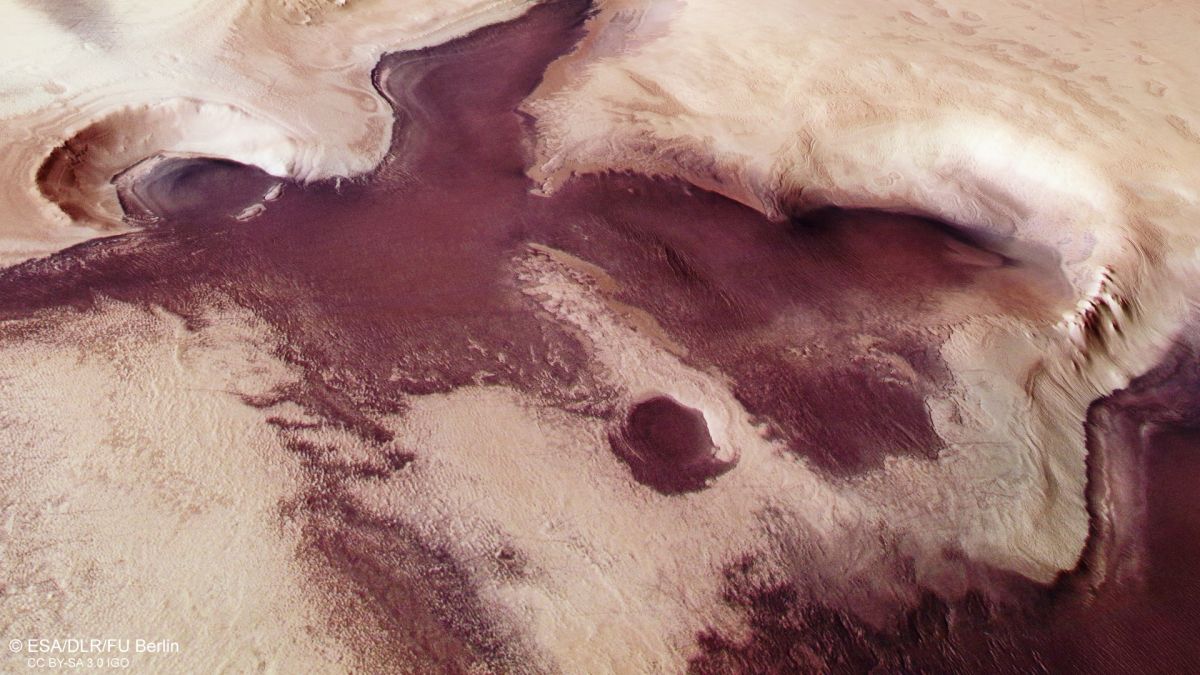

With a little imagination, in this view of the south pole of Mars from ESA Mars Express, you will see an angel and a heart together.
Photo: ESA / DLR / FU Berlin, CC BY-SA 3.0 IGO / Courtesy
The silhouettes captured by the probe Mars Express of the European Space Agency (ESA) an angelic figure, with its halo included, are distinguished by cropping at the top of the image taken by the Mars Express High Resolution Stereo Camera (HRSC), in addition to the image of a great heart located right in the center.
These shapes seem to stand out against the toasted background (or, if we want to continue with the Christmas simile, egg-colored) of the Martian surface.
The dark color is the result of the composition of the dune fields in the area, formed mainly by dark-colored sands, rich in minerals that make up rocks that can also be found on Earth (specifically, pyroxene and olivine).
This ethereal scene is set in the southern polar region on Mars, although the pole as such would be out of the picture, just to the right (southbound), the EA said in a statement on Thursday.

The south pole of Mart it is usually covered by a layer of ice 1.5 km thick and about 400 km long, with a volume of about 1.6 million cubic kilometers, of which just over 12% is water ice. The rest of the polar cap is composed mostly of dry ice (solid carbon dioxide), which freezes in the atmosphere during the winter and then sublimates (changes from solid to gaseous state) in summer.
As the southern hemisphere of Mars is right now in summer, this image shows how the ice at the planet’s south pole is at its lowest annual level.
The “angel” and the “heart” are made up of several interesting formations.
First, the angel’s hand extending to the left could be a large sublimation pit, formed when ice turns to gas and leaves pockets and depressions on the planet’s surface: a process that happens frequently in season changes. These sublimation pits have been seen on other planets in the solar system, such as Pluto, and are also seen in the ground to the right.
“The‘ head ’and halo are made up of an impact crater, created when a body in space flew inwards to collide with the crust of Mars,” ESA said. This impact left on display multiple layers of deposits, take a look below the surface.
Fine, scratch-like marks on the surrounding landscape are telltale signs of the action of dust on the windy planet.
Science is fascinating and the imaginative interpretation of ESA shapes is a fitting way to mark the Christmas season.